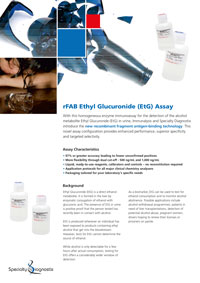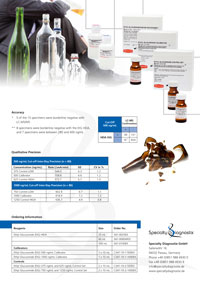The new 6-Actylmorphine (6-AM) Urine HEIA offers a highly specific and extremely sensitive method for the determination of recent heroin abuse. The reduction of false positive screenings helps to minimize costs for confirmation testing and provides more confidence in current screening techniques.
Based on the new recombinant antigen-binding fragment (rFAB) technology, this homogeneous enzyme immunoassay is an excellent tool to distinguish between samples that are positive due to heroin consumption and samples that are positive due to morphine intake, prescription medication or poppy seed ingestion.






